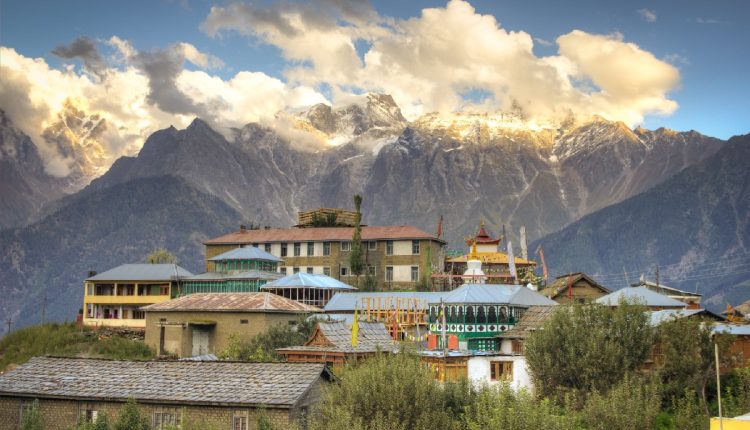Kalpa: The Untouched Village of Kinnaur That Took My Breath Away
by ARUN, a wandering soul with a backpack and a soft corner for silence
I’ve traveled far and wide across Himachal, but nothing — and I mean nothing — prepared me for the silent beauty of Kalpa.
Tucked away in the Kinnaur district, perched above Reckong Peo at around 9,700 feet, Kalpa isn’t just a village — it’s a slow-motion dream, painted in apple orchards, wood-carved homes, Buddhist chants, and snow peaks that blush pink at sunrise.
I had read a line once that said, “Some places are poems waiting to be read slowly.”
Kalpa is that place.
Getting There: The Road That Tests and Rewards
The journey to Kalpa is an adventure in itself. I took a rickety bus from Shimla that wound along the dramatic Sutlej river, past steep cliffs and prayer-flagged bends. The closer we got to Kinnaur, the more the air changed — colder, crisper, and sacred somehow.
From Reckong Peo, Kalpa is just a 15-minute drive uphill — and suddenly, you’re in another world. No horns. No crowds. Just wind, pine trees, and silence.
First Glimpse: The Kinner Kailash View That Stuns You
The moment I stepped out of the jeep, my eyes locked on something majestic:
The mighty Kinner Kailash range, standing tall, spiritual, and slightly dusted with snow, as if the gods had been baking mountains and sprinkled some powdered sugar.
The peaks glow differently every hour. In the morning, they’re silver. By dusk, they’re on fire. I spent hours on my homestay balcony doing nothing — just watching the mountains breathe.
Life in Kalpa: Time Moves Slowly (And That’s the Point)
Kalpa isn’t about “sightseeing.” It’s about feeling.
The village winds gently along a single road lined with traditional Kinnauri wooden homes, carved windows, and apple trees that seem to whisper stories to the wind. Children run barefoot. Monks walk silently. Elderly locals sit with prayer wheels and wide smiles.
I stayed in a cozy homestay run by an old couple who served me steaming rajma-chawal, endless cups of tea, and stories of gods, snowstorms, and how “Kalpa doesn’t change — only the sky does.”
The Temple Complex: Where Time Stands Still
One morning, I visited the Narayan-Nagini Temple — a centuries-old wooden structure, intricately carved and surrounded by silence thick enough to hear your own thoughts. The scent of deodar, the fluttering of prayer flags, and the occasional clang of a temple bell made the whole place feel otherworldly.
Just nearby sits a small Buddhist monastery — bright, peaceful, and open to anyone who walks in with respect.
Simple Joys, Big Memories
Here’s what filled my days in Kalpa:
-
Waking up to birdsong and peaks kissed by sun
-
Sipping tea by the fireplace while snowflakes danced outside
-
Walking with no destination through narrow village trails
-
Buying handmade woolen socks from a smiling grandmother
-
Sharing silence with strangers who quickly became friends
There are no clubs here. No cafes with playlists.
Just a deep, immersive quiet that slowly enters your bones.
Tips for Fellow Travelers:
-
Best time to visit: April–June for greenery and views; October–December for snow dustings
-
Stay in homestays — it’s the best way to experience local hospitality
-
Dress warm — the wind here is wild even in summer evenings
-
Respect the pace — this isn’t a place to rush
-
Carry books, notebooks, and your own stillness — Kalpa will reward you for it
Final Thought: Kalpa Healed Me Without Trying
I went to Kalpa looking for a weekend escape.
What I found was something rare — a place that doesn’t want to impress you. It just wants to exist with you.
In Kalpa, you don’t take photos for social media. You take mental pictures — of the way sunlight dances on snow, of the smell of pine mixed with woodsmoke, and of how your breath slows down when you’re surrounded by mountains and meaning.
So if your soul feels noisy, take a bus to Kalpa.
Sit by the window.


Comments are closed.